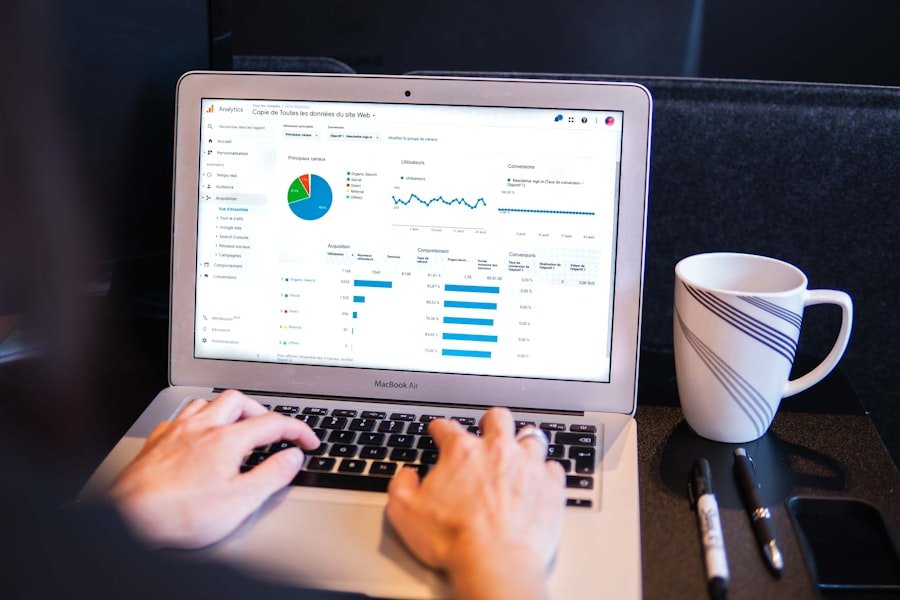In the contemporary landscape of human resource management, the term “People Analytics” has emerged as a pivotal concept, signifying a transformative approach to understanding and managing workforce dynamics. At its core, People Analytics involves the systematic collection and analysis of data related to employees, their behaviours, and their performance within an organisation. This data-driven methodology enables HR professionals to make informed decisions that can significantly enhance organisational effectiveness and employee satisfaction.
The rise of big data and advanced analytical tools has made it increasingly feasible for organisations to harness vast amounts of information, turning raw data into actionable insights. The evolution of People Analytics can be traced back to the early 2000s when organisations began to recognise the potential of data in shaping HR strategies. Initially, the focus was primarily on basic metrics such as turnover rates and recruitment costs.
However, as technology advanced, so too did the sophistication of analytics. Today, People Analytics encompasses a wide array of metrics, including employee engagement scores, performance evaluations, and predictive modelling for talent management. This shift towards a more analytical approach reflects a broader trend in business where data is seen as a critical asset that can drive strategic decision-making.
Summary
- People Analytics is the use of data and analysis to understand, improve, and optimise the performance of people within an organisation.
- In HR, People Analytics plays a crucial role in helping to make data-driven decisions about recruitment, retention, and employee development.
- Implementing People Analytics can lead to improved decision-making, better talent management, and increased employee satisfaction and productivity.
- People Analytics can improve employee engagement by identifying key drivers, predicting turnover, and providing insights for targeted interventions.
- Using People Analytics can help organisations make informed business decisions by providing insights into workforce trends, performance, and potential risks.
The Role of People Analytics in HR
People Analytics plays a multifaceted role within the realm of human resources, serving as a bridge between data and strategic HR initiatives. One of its primary functions is to provide HR professionals with insights that can inform recruitment strategies. By analysing historical hiring data, organisations can identify patterns that lead to successful hires, allowing them to refine their selection processes.
For instance, if data reveals that candidates from certain educational backgrounds or with specific skill sets tend to perform better in particular roles, HR can adjust their recruitment criteria accordingly. Moreover, People Analytics extends beyond recruitment; it also plays a crucial role in employee retention strategies. By examining turnover data and employee feedback, organisations can pinpoint the factors contributing to attrition.
For example, if analysis shows that employees in a specific department are leaving at a higher rate due to lack of career advancement opportunities, HR can implement targeted development programmes to address these concerns. This proactive approach not only helps retain talent but also fosters a culture of continuous improvement within the organisation.
The Benefits of Implementing People Analytics

The implementation of People Analytics offers a plethora of benefits that can significantly enhance an organisation’s operational efficiency and employee satisfaction. One of the most notable advantages is the ability to make data-driven decisions rather than relying on intuition or anecdotal evidence. This shift towards empirical decision-making allows organisations to allocate resources more effectively and optimise their workforce strategies.
For instance, by analysing productivity metrics, a company may discover that certain teams consistently outperform others. This insight can lead to targeted training initiatives or resource reallocation to maximise overall productivity. Additionally, People Analytics fosters a culture of transparency and accountability within organisations.
When data is used to inform decisions, employees are more likely to understand the rationale behind HR policies and practices. This transparency can enhance trust between management and staff, leading to improved morale and engagement. Furthermore, when employees see that their performance is being measured and valued through objective metrics, they may feel more motivated to excel in their roles.
This alignment between organisational goals and individual performance can create a more cohesive and driven workforce.
How People Analytics Can Improve Employee Engagement
Employee engagement is a critical factor in organisational success, and People Analytics provides valuable tools for enhancing this aspect of workplace culture. By leveraging data from employee surveys, feedback mechanisms, and performance reviews, organisations can gain insights into what drives engagement among their workforce. For example, if analytics reveal that employees are more engaged when they have opportunities for professional development, HR can implement training programmes or mentorship initiatives tailored to these needs.
Moreover, People Analytics enables organisations to track engagement levels over time and assess the impact of various initiatives. By establishing key performance indicators (KPIs) related to engagement—such as participation rates in training sessions or feedback scores from employee surveys—HR can measure the effectiveness of their strategies. If certain initiatives lead to noticeable improvements in engagement scores, organisations can double down on those efforts while reassessing or discontinuing less effective programmes.
This iterative process ensures that engagement strategies remain relevant and responsive to employee needs.
Using People Analytics to Make Informed Business Decisions
The integration of People Analytics into broader business decision-making processes is becoming increasingly essential for organisations seeking a competitive edge. By aligning workforce data with business outcomes, companies can identify correlations that inform strategic planning. For instance, if an analysis reveals that high employee engagement correlates with increased customer satisfaction scores, leadership can prioritise engagement initiatives as part of their overall business strategy.
Furthermore, predictive analytics within People Analytics allows organisations to anticipate future trends and challenges. By analysing historical data alongside external market factors, businesses can forecast potential turnover rates or skill shortages within their workforce. This foresight enables proactive measures to be taken—such as succession planning or targeted recruitment campaigns—ensuring that the organisation is well-prepared for future demands.
In this way, People Analytics not only supports HR functions but also plays a vital role in shaping overall business strategy.
Ethical Considerations in People Analytics

While the benefits of People Analytics are substantial, it is imperative for organisations to navigate the ethical considerations associated with data collection and analysis carefully. One of the primary concerns revolves around employee privacy. As organisations gather extensive data on their workforce, they must ensure that they are transparent about what information is being collected and how it will be used.
Employees should be informed about the purpose of data collection and given the opportunity to consent or opt-out where appropriate. Additionally, there is a risk of bias in data interpretation and decision-making processes. If not managed properly, analytics can inadvertently reinforce existing biases within an organisation’s culture or hiring practices.
For example, if historical hiring data reflects a lack of diversity due to systemic biases, relying solely on this data for future hiring decisions could perpetuate these inequalities. To mitigate this risk, organisations must adopt a holistic approach to People Analytics that includes regular audits of their data practices and outcomes to ensure fairness and inclusivity.
The Future of People Analytics
The future of People Analytics is poised for significant evolution as technological advancements continue to reshape the landscape of human resources. Artificial intelligence (AI) and machine learning are expected to play increasingly prominent roles in analysing workforce data. These technologies can enhance predictive capabilities by identifying complex patterns within large datasets that may not be immediately apparent through traditional analysis methods.
As AI becomes more integrated into People Analytics platforms, organisations will be able to make even more nuanced predictions about employee behaviour and performance. Moreover, the growing emphasis on employee well-being and mental health is likely to influence the direction of People Analytics in the coming years. As organisations recognise the importance of holistic employee experiences, analytics will need to encompass not only performance metrics but also indicators related to well-being and job satisfaction.
This shift will require HR professionals to develop new frameworks for measuring success that go beyond traditional productivity metrics, fostering a more comprehensive understanding of what drives employee engagement and retention.
Implementing People Analytics in Your Organisation
Implementing People Analytics within an organisation requires careful planning and execution to ensure its effectiveness and sustainability. The first step involves establishing clear objectives for what the organisation hopes to achieve through analytics. Whether the focus is on improving recruitment processes, enhancing employee engagement, or optimising workforce planning, having defined goals will guide the selection of relevant metrics and data sources.
Once objectives are established, organisations must invest in the necessary technology and tools for data collection and analysis. This may involve adopting specialised software solutions that facilitate data integration from various HR systems or leveraging existing platforms with enhanced analytical capabilities. Additionally, training HR personnel in data literacy is crucial; they must be equipped with the skills needed to interpret analytics effectively and translate insights into actionable strategies.
Furthermore, fostering a culture that embraces data-driven decision-making is essential for successful implementation. This involves engaging leadership at all levels in understanding the value of People Analytics and encouraging collaboration across departments to share insights and best practices. By creating an environment where data is valued as a strategic asset, organisations can unlock the full potential of People Analytics in driving organisational success and enhancing employee experiences.
People Analytics is a crucial tool for companies like British Gas, as demonstrated in the case study on workforce planning at British Gas. By utilising data and analytics, companies can make informed decisions about their workforce, leading to improved efficiency and productivity. Leyland Trucks is another example of a company that could benefit from People Analytics, as discussed in the case study on their products available in the Leyland Trucks category. Understanding database management trends, such as those outlined in the article on the top five database management trends for 2019, is essential for companies looking to leverage People Analytics effectively.
FAQs
What is People Analytics?
People Analytics is the use of data and analytical tools to understand, manage, and improve the performance and engagement of an organization’s workforce. It involves collecting and analyzing data on various aspects of employees, such as recruitment, retention, performance, and satisfaction, to make data-driven decisions that can benefit the organization and its employees.
What are the benefits of People Analytics?
Some of the benefits of People Analytics include improved recruitment and retention strategies, better understanding of employee performance and engagement, identification of training and development needs, and the ability to make more informed decisions about workforce planning and management.
How is People Analytics different from HR analytics?
While HR analytics focuses on traditional HR metrics such as turnover rates and time-to-fill, People Analytics takes a more holistic approach by incorporating a wider range of data, including employee feedback, performance evaluations, and external market data. People Analytics also aims to provide insights that can help improve the overall employee experience and drive business outcomes.
What are some common metrics used in People Analytics?
Common metrics used in People Analytics include employee turnover rates, time-to-hire, employee engagement scores, performance ratings, diversity and inclusion metrics, and training and development ROI. These metrics can provide valuable insights into the effectiveness of various HR and people management initiatives.
How is data privacy and ethics addressed in People Analytics?
Data privacy and ethics are important considerations in People Analytics, and organizations must ensure that they comply with relevant data protection laws and regulations. This includes obtaining consent from employees to collect and use their data, ensuring the security of the data, and using it in a responsible and ethical manner. Additionally, organizations should be transparent with employees about the types of data being collected and how it will be used.
